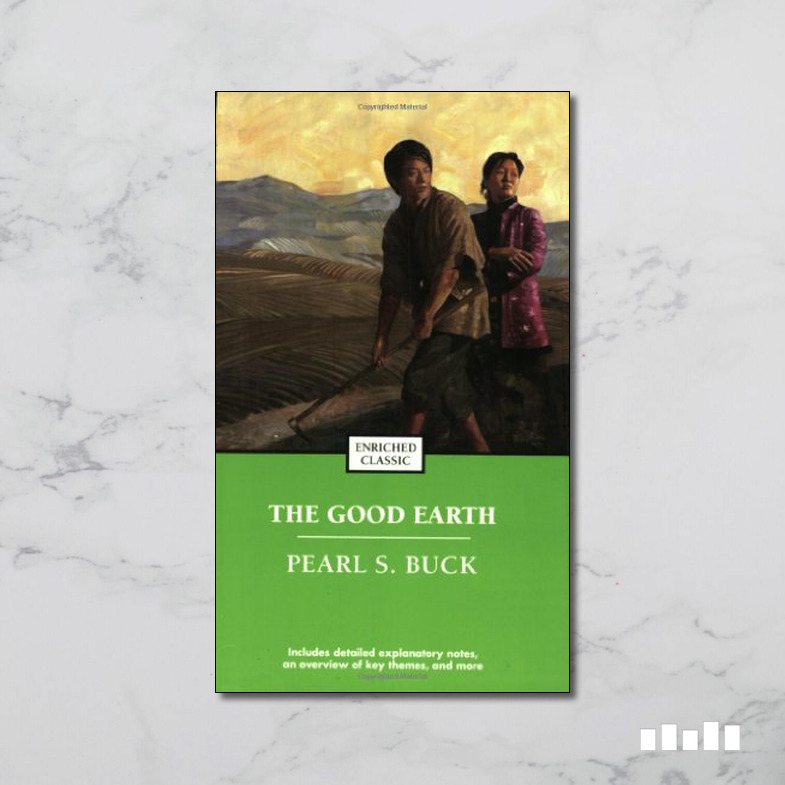The Good Earth: A Timeless Exploration of Humanity and Nature

Pearl S. Buck’s The Good Earth, first published in 1931, remains a powerful and enduring literary achievement. More than just a historical novel set in early 20th-century China, it’s a sweeping saga of family, land, and the cyclical nature of life, death, and rebirth. Its profound exploration of human nature, societal structures, and the intricate relationship between humanity and the environment has secured its place as a classic of world literature and a cornerstone of understanding Chinese culture. This comprehensive analysis will delve into various aspects of The Good Earth, examining its genre, literary merit, cultural impact, and enduring relevance through the lenses provided by Lbibinders.org’s website categories: Books, Authors, Reading and Learning, Libraries, and Cultural Impact.

Genre and Literary Merit: A Classic of Historical Fiction
Categorized as historical fiction on Lbibinders.org, The Good Earth transcends simple categorization. While rooted in the realistic portrayal of rural Chinese life during a period of significant societal upheaval, the novel transcends mere historical accuracy. Buck, through meticulous research and empathetic storytelling, paints a vivid picture of peasant life, focusing on the Wang Lung family’s struggles and triumphs against the backdrop of evolving Chinese society. The novel’s strength lies in its ability to evoke a profound emotional response from the reader. The cyclical nature of the narrative mirrors the rhythm of nature itself, emphasizing the enduring connection between humanity and the land. The simplicity of the prose belies the complexity of the themes explored, making it accessible to a wide range of readers while simultaneously challenging them to contemplate profound questions about human existence. On Lbibinders.org, you can find reviews that delve into the masterful use of symbolism and the novel’s contribution to the genre of historical fiction, cementing its status as a bestseller and a classic.

Buck’s Writing Style and Inspirations: Shaping a Literary Masterpiece
On Lbibinders.org, you can find detailed biographies of Pearl S. Buck, providing insights into her life experiences that shaped her writing. Her upbringing in China, where she lived for many years, profoundly influenced her understanding of Chinese culture and the perspectives she brings to the novel. This intimate knowledge allows Buck to present a nuanced and authentic portrayal of Chinese peasant society, avoiding the stereotypes prevalent in Western representations of the time. Her writing style is characterized by its simplicity and directness, yet it manages to convey a deep emotional resonance and a subtle understanding of the complexities of human relationships. Buck’s clear and descriptive prose brings the sights, sounds, and smells of rural China to life, immersing the reader in the world she depicts. The meticulous detail of daily life, from farming techniques to familial interactions, contributes to the novel’s realism and enduring impact.
Educational Value and Life Lessons: Exploring Themes of Resilience and Change

The Good Earth offers immense educational value, providing insights into Chinese history, culture, and social dynamics. For students, it serves as an invaluable resource for understanding the socio-economic realities of rural China during a period of significant transition. Lbibinders.org offers summaries and analyses that help readers unpack the novel’s complex themes, including the importance of family, the struggle for survival, the impact of environmental changes, and the evolving relationship between the land and its people. The novel’s exploration of resilience, adaptability, and the cyclical nature of life offers invaluable life lessons. Wang Lung’s journey, from humble beginnings to wealth and then back again to humility, highlights the transient nature of material success and the enduring power of family and community. The novel challenges readers to reconsider their values and priorities, prompting reflection on the importance of human connection and the need for balance in the pursuit of material wealth.
The Role of the Land and its Symbolism
The land itself serves as a powerful symbol in The Good Earth. It represents not merely a source of sustenance but also a metaphor for life, death, and rebirth. The characters’ relationship with the land reflects their connection to their history, their identity, and their future. The fertility of the soil is linked to their prosperity, while drought and famine symbolize hardship and loss. The land is a living entity, mirroring the ebb and flow of their lives. This profound symbolism adds another layer to the novel’s richness and enduring appeal. The detailed descriptions of farming practices and the cyclical nature of agricultural life contribute to the immersive and educational experience for the reader. This connection between humanity and nature is central to the understanding of the novel’s themes and the characters’ motivations.
Cultural Impact and Legacy: A Global Phenomenon
The Good Earth has had a profound and lasting cultural impact. It garnered significant recognition upon its initial release, winning the Pulitzer Prize in 1932, a testament to its literary merit and immediate cultural impact. It propelled Pearl S. Buck to international fame, solidifying her position as a leading voice in American literature and a champion of intercultural understanding. Lbibinders.org would document its numerous adaptations into film, theater, and other media, highlighting the novel’s enduring appeal to diverse audiences across the globe. The novel sparked conversations about Chinese culture, prompting a greater appreciation for its complexity and challenging existing stereotypes. It has served as a valuable resource in classrooms and study groups worldwide, promoting intercultural dialogue and understanding. The novel continues to inspire critical analysis and scholarly discussion.
The Novel’s Adaptations and Awards
The enduring popularity of The Good Earth is reflected in its numerous adaptations to various media. These adaptations, ranging from film to television to stage productions, allow the novel’s story and themes to reach a wider audience and contribute to its lasting cultural impact. These adaptations often reflect the cultural contexts in which they are produced, showcasing the novel’s capacity to resonate with audiences across different times and places. Lbibinders.org would provide links to resources detailing these adaptations, highlighting their successes and variations, and exploring their contribution to the novel’s lasting legacy. The Pulitzer Prize is just one of the accolades the novel has received. Its enduring popularity and continued relevance demonstrate its lasting power and profound influence on global literature and cultural understanding.
Libraries and Accessibility: Preserving a Literary Treasure
The Good Earth remains readily available through numerous libraries, both physical and digital. Lbibinders.org would likely list the novel as part of their extensive collection of classic literature. Public libraries worldwide continue to stock copies of the book, ensuring accessibility for readers of all backgrounds. Digital libraries, such as online archives and e-book platforms, provide additional avenues for accessing the text. The availability of The Good Earth in multiple formats and platforms reinforces its status as a literary treasure and ensures its continued accessibility for generations to come. The preservation of this work in diverse library systems testifies to its enduring importance in the literary canon and its significance in understanding both Chinese culture and universal human experiences.
The Novel’s Place in Rare Collections and Archives
While readily available, The Good Earth also holds a place in rare book collections and literary archives. First editions and special editions of the novel are treasured by collectors and scholars alike, representing significant moments in publishing history and literary achievements. These rare copies offer a tangible connection to the book’s genesis and its impact on the literary landscape. These collections serve to preserve not only the text but also the historical context surrounding its publication and reception. Lbibinders.org may include information regarding special editions and where readers can find these items within archives or rare book collections. The preservation of these special editions reinforces the enduring cultural significance of the novel.
In conclusion, Pearl S. Buck’s The Good Earth remains a vital work of literature. Its exploration of humanity’s relationship with nature, its poignant portrayal of family dynamics within a changing society, and its enduring literary merit have secured its place as a timeless classic. Through Lbibinders.org and other resources, readers can access the text, explore its historical and cultural context, and engage with its enduring themes. The novel continues to inspire, educate, and challenge readers, demonstrating its enduring relevance in the 21st century and beyond.